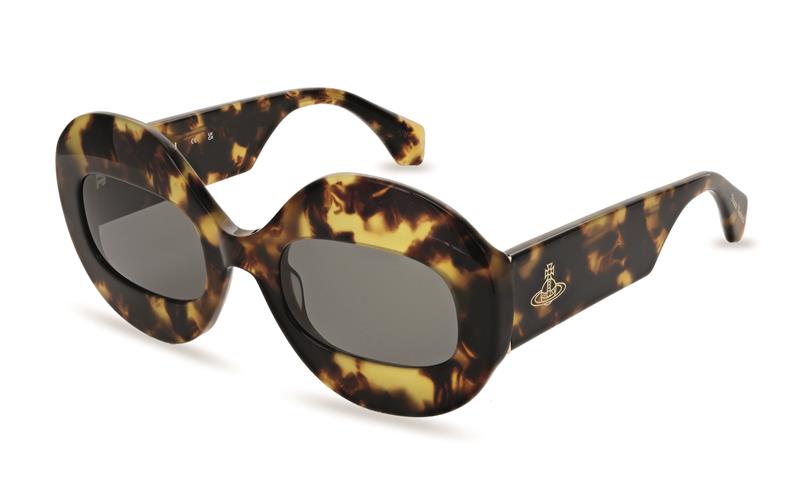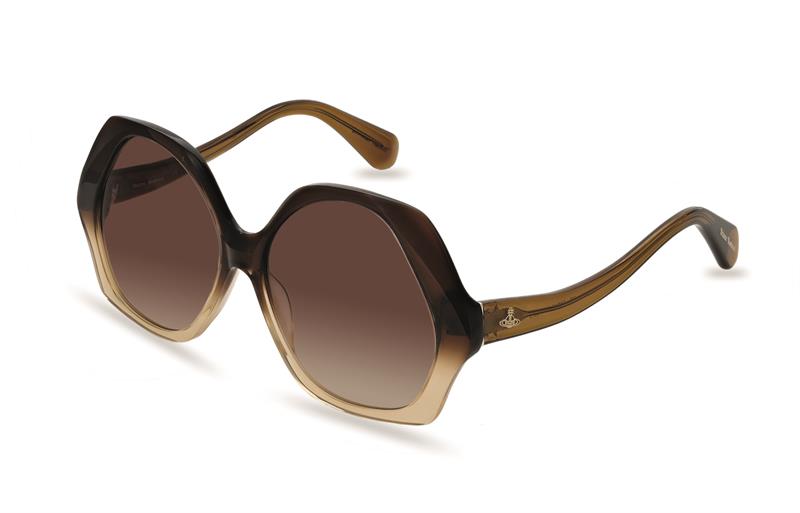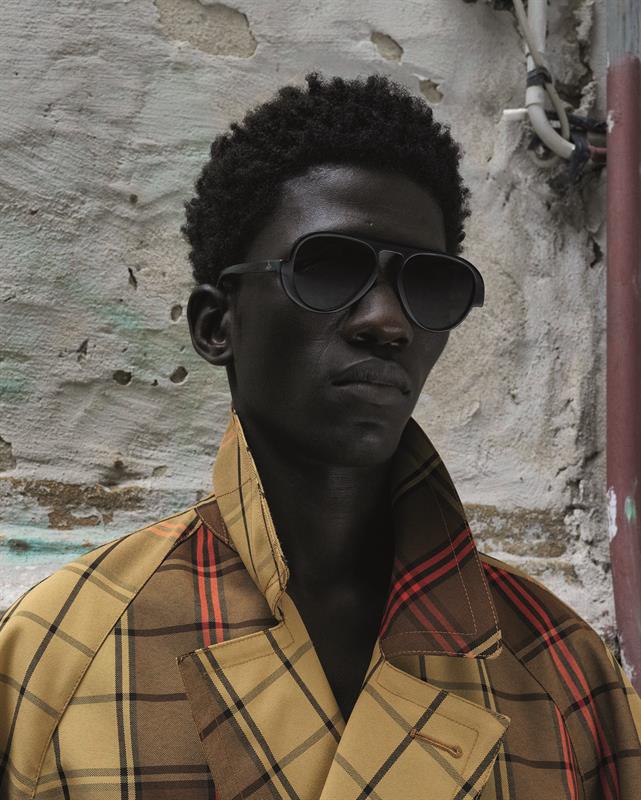
There has been a significant amount of change over the past two years at Mondottica, the company that holds the eyewear licenses for well-known fashion brands, such as Cath Kidston, United Colors of Benetton and Ted Baker.
In January, 2020, Mondottica’s founder and chief executive officer (CEO) Michael Jardine stepped down and handed control to Tony Pessok, who only joined as chief commercial officer six months earlier.
A restructure of shareholders took place in October, 2020 and Mondottica welcomed Capital Eye Holding and Ross Holdings as new shareholders with Ferdinand Menrad the other substantial shareholder.
In 2022, Mondottica re-branded to signify a new era for the company. The historical typeface was ditched and a fresher, trendier and less formal look was adopted. A lowercase typeface has been used, which is notably used by credit card disruptors Monzo and retail giants Amazon.
A tailored fit
Leading Mondottica through these changes during the tumultuous times of Covid-19 is Pessok, who joined from clothing business Perry Ellis. He was managing director of Europe and head of global licensing at the $900m company that specialised in licensing across categories, such as children’s wear.
‘I’ve been in apparel for 30 odd years, working on various brands, whether they’re UK based or global brands, and looking at brand strategy. I think one of the key things that Mondottica missed, was that we had a phenomenal portfolio of brands that all related to the apparel in the fashion world, but everything was treated as a one-size fits all and trying to take everything global when that isn’t the reality,’ Pessok says.
He explains that brands resonate in certain key markets, predominately their home market, and normally have a second or third marketplace of significance, then all the others are peripheral. ‘The main thing that I wanted to get my team doing was working on a brand-by-brand basis and putting in a strategy that concentrated on core markets. I wanted us to find out where we have white space for brands within a territory, or looking at certain territories and thinking “does it make sense to commercialise a brand that doesn’t necessarily resonate within a certain marketplace?” It is almost back to basics.’
Mondottica asked itself if any brands within the portfolio conflicted with another, which resulted in exiting six brands and allowing the eyewear company to focus its time, energy and efforts. ‘We were looking at the peripheral parts of the business and concentrating on what we’ve called our core business, which is the brand portfolio that we have today,’ Pessok adds.
Out with the old
Pessok explains that, historically, when Mondottica added a new brand to its portfolio it would have designed a collection and its sales teams would have introduced the brand to every distributor. He says: ‘We decided to look at it strategically and say, “What are the brand’s core markets?”’ For example, the UK is not a core market for Scotch and Soda, so Mondottica focused its efforts on continental Europe in the first instance then gradually added key global partners on a market-by-market basis. Learn from your mistakes but also from your successes and then gradually roll that business out. That seems to have worked.’

Ted Baker, Karen Millen, Joules, Hackett and the recently launched Vivienne Westwood are prime brands for Mondottica in the UK. The priority for Mondottica in the UK is to align the brand and commercial strategy. ‘Historically, when we designed a collection there was never any continuity or core within the collection. If we’ve got proven success in certain styles, why phase them out? Why not keep them in, recolour or tweak them slightly? You don’t need to reinvent the wheel every single season,’ Pessok explains, noting that this approach is about focusing on successes and building upon them, rather than just trying to change. He adds that it is the same in the world of apparel. ‘Sometimes you move on too quickly before the end consumer is actually ready to move on.’ Pessok highlights that communication has improved in this area between the commercial brand and design teams and has been particularly successful in the UK.

As global CEO, Pessok looks at the individual brands on a territory-by-territory basis rather than where the key pockets of success are. ‘I set the strategy with the commercial teams and then it’s down to them to go and execute it,’ Pessok says. He adds the UK has shown strong growth. Another region of growth has been the Middle East, which he attributes to events Mondottica held in Dubai and to effective product analysis. Mondottica realised that 70% of the business in the region is in sunglasses, compared to 25% in other markets.
‘How can we support the business over there? Do we need to do two releases of sun a year? Do we need to make sure that we are never out of stock on certain sun brands? We were strategic but back to basics in terms of growing the business because while there are areas that have performed because of Covid, there are other areas that haven’t performed, unfortunately. India has taken a significant hit from Covid, as well as Latin America. It has taken longer to recover and get back to where we should be with those territories,’ Pessok says.
Baptism of fire
Jardine planned for Pessok to join the business and then become CEO later so that staff did not feel disparaged or disrespected by a new leader without any optical experience. Those six months gave Pessok the opportunity to set up a strategy and identify the brands within the portfolio that resonated and what Mondottica could do better with those brands.
‘The challenge then was becoming the CEO in January and having those plans that I wanted to execute, and then four weeks later Covid hit. It was a baptism of fire,’ he says.
Pessok identified a number of different silos within the business, such as disparity between its London and Nottingham offices that were run as separate departments. ‘The cleanest thing that I had to do, more than anything, was to bring everybody together. We now have management team meetings every month, which are alternating months in London and Nottingham,’ Pessok explains.
There are markets, such as Australia and India, that Pessok has not had a chance to visit yet because of Covid, which he says has been a challenge because he has been unable to learn about the market, find out what works and what does not. However, holding regional events has helped get the company back to where it needs to be. Showcasing products while spending valuable time in different territories has helped Mondottica get to know its partners better, which Pessok says helps differentiate the company from others as a people-driven business.
‘In the last couple of years, the business needed structures and organisation put into place. It needed that focus about what we should really be focusing on. We were running around doing a lot of things that didn’t necessarily result in financial benefit but then also looking at it bottom-up. I’m more interested in this being a profitable business rather than just top line sales,’ Pessok says.
Pessok’s vision for Mondottica is to continue working with its existing brands while exploring new ones that must have a unique selling point, resonate in core markets and not conflict with other brands in the portfolio. Mondottica recently partnered with Quicksilver and Roxy in the US because it was evident to Pessok that the company did not have any core US brands. ‘I am looking at things, not just globally, but also territory-by-territory to make sure those brands mean something. Do we have the right infrastructure within those particular territories to be able to do justice to the brand? It’s about looking at our own strengths and weaknesses and saying, “If the brand’s home market is Italy, does it make sense for us to take a brand on when we know that we are not particularly strong within the Italian marketplace?” I’m looking at it on a brand-by-brand level and what the brand’s relationships within the wider global community is, do we then resonate? Can we replicate their success in X, Y or Z market?’
Delivering results

Mondottica’s financial results in 2021 were the most profitable year it has ever had, according to Pessok, which he credits to the entire team. ‘Q1 in 2022 has already surpassed what we did in Q1 of 2021 so we’re on the right path. We hope it continues during the rest of the year,’ he says. Pessok explains his relationship with the company’s shareholders is a partnership. ‘The shareholders are there to look at the business and it’s for me to put the strategy together and sell the strategy to the shareholders. It’s not a shareholder and CEO relationship,’ he says, adding that the shareholders have been a valuable sounding board given their years of interest in the optical market.
Sustainability is high on the agenda for Mondottica too with this most evident in the new Vivienne Westwood collection at Specsavers. ‘A lot of brands, particularly in optical, have started to introduce individual SKUs that they can brand as sustainable. What we did with Vivienne Westwood and Eastman was make the entire collection fully sustainable. It’s what Vivienne Westwood stands for and that has to come through. We have to be seen as a brand extension to our brand partners, rather than just design eyewear for them. We have to resonate. We have to stand for everything that the brand stands for within our subcategory,’ he concludes.
